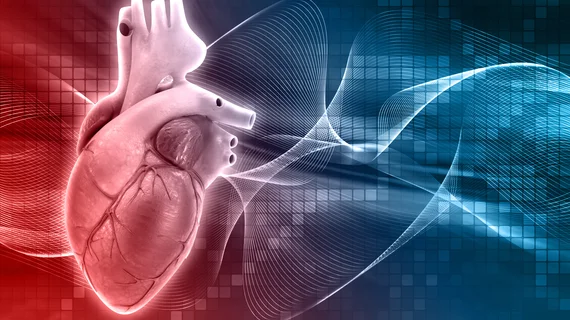Cardiogenic shock signals complexity in takotsubo patients
Preliminary results from the RETAKO trial, a study of takotsubo syndrome (TTS) in the Spanish population, have identified cardiogenic shock (CS) as an independent, strong predictor of mortality and complexities in TTS patients—a demographic that’s already at considerable risk for complications.
Writing in JACC: Heart Failure, first author Manuel Almendro-Delia, MD, PhD, and colleagues with Hospital Virgen Macarena in Seville, Spain, said TTS is commonly written off as a benign condition, but that’s a dangerous assumption. Complications, including acute heart failure and cardiogenic shock, can quickly elevate the disease’s mortality rate.
“The acute management of CS in TTS is challenging, because usual therapeutic options can be potentially harmful,” Almendro-Delia and coauthors wrote. “In this regard, early identification of risk factors associated with CS in TTS may prove particularly helpful in establishing specific therapeutic approaches based on risk assessment.”
The team analyzed data from 711 TTS patients in the REKATO registry, 11.4 percent of whom developed CS during a year of follow-up. As expected, in-hospital mortality and complication rates were highest in those patients, who saw:
- A 13.6 percent increased risk of death
- A 50 percent increased risk of infection
- A 36 percent increased risk of acute kidney failure
- A 12 percent increased risk of ventricular arrhythmias
- A 30 percent increased risk of new-onset atrial fibrillation
CS was the strongest independent predictor of long-term, all-cause mortality, with a hazard ratio of 5.38, Almendro-Delia et al. said. Male sex, those with lower left ventricular ejection fraction at presentation, physical triggers, QTc interval prolongation and a significant left ventricular pressure gradient all signified CS.
“Considering these findings with those from smaller, earlier studies, a profile of takotsubo shock emerges that differs from that of shock associated with acute myocardial infarction, in which hospital mortality may exceed 50 percent, mostly attributed to intractable pump failure, and with compromised ejection fraction in many survivors,” Scott W. Sharkey, MD, of the Minneapolis Heart Institute Foundation, wrote in a related editorial. “The relatively more favorable hospital survival among patients with takotsubo shock may reflect the presence of largely reversible myocardial injury, a hallmark of takotsubo events.”
Sharkey also touched on some unanswered questions in Almendro-Delia et al.’s work, like whether shock-associated mortality can be directly linked to TTS, whether catecholamine administration might adversely affect survival and whether TTS has any long-term consequences beyond mortality.
“Although cardiogenic shock represents a major obstacle during the clinical course of takotsubo syndrome, long-term survival with complete recovery of LV contraction is not uncommon even when shock is profound, therefore extraordinary supportive measures may be appropriate in the absence of a non-survivable coexisting illness,” he wrote. “Despite the notable work by the RETAKO investigators, considerable uncertainty remains regarding cardiogenic shock in TTS.”

